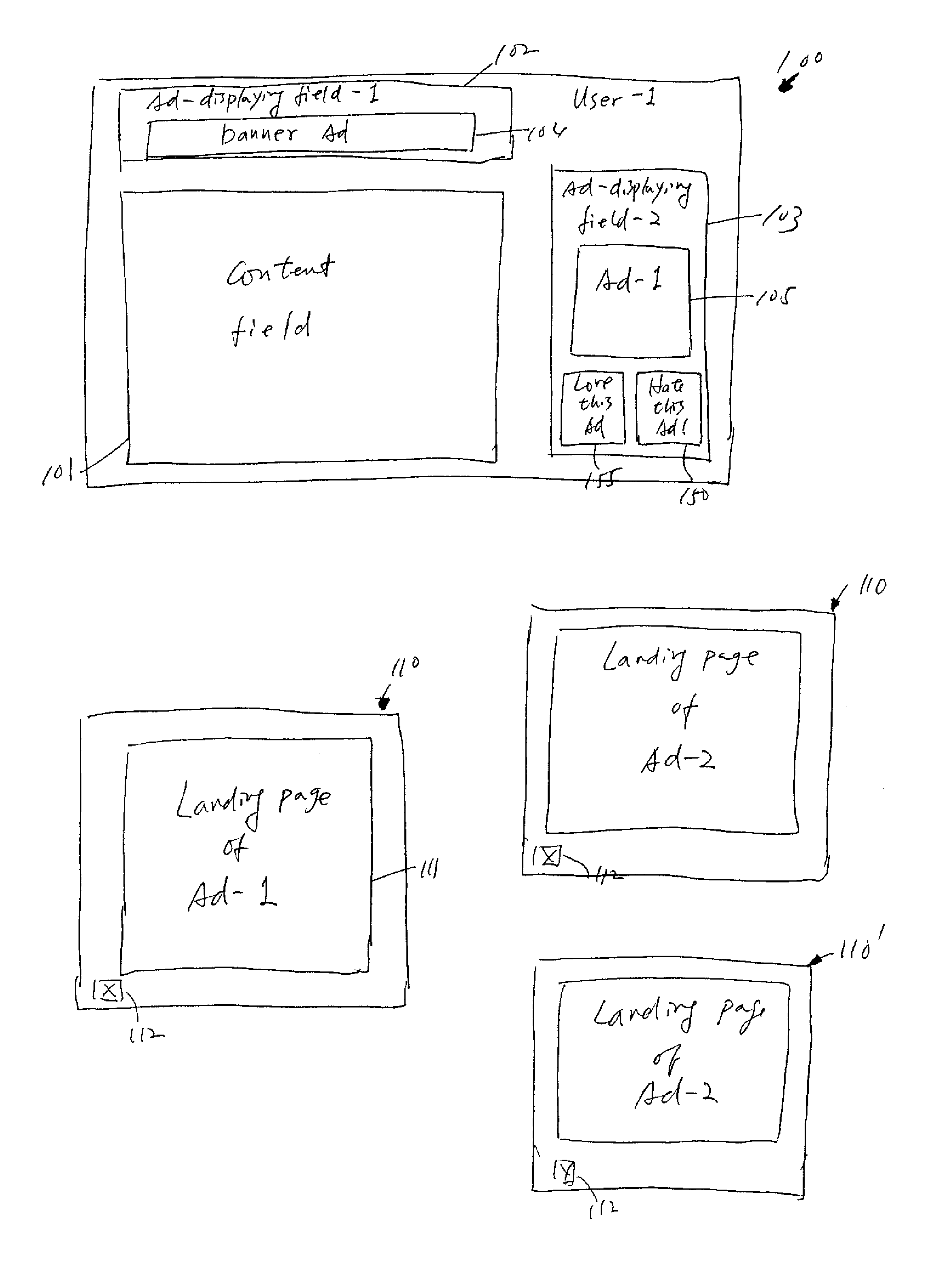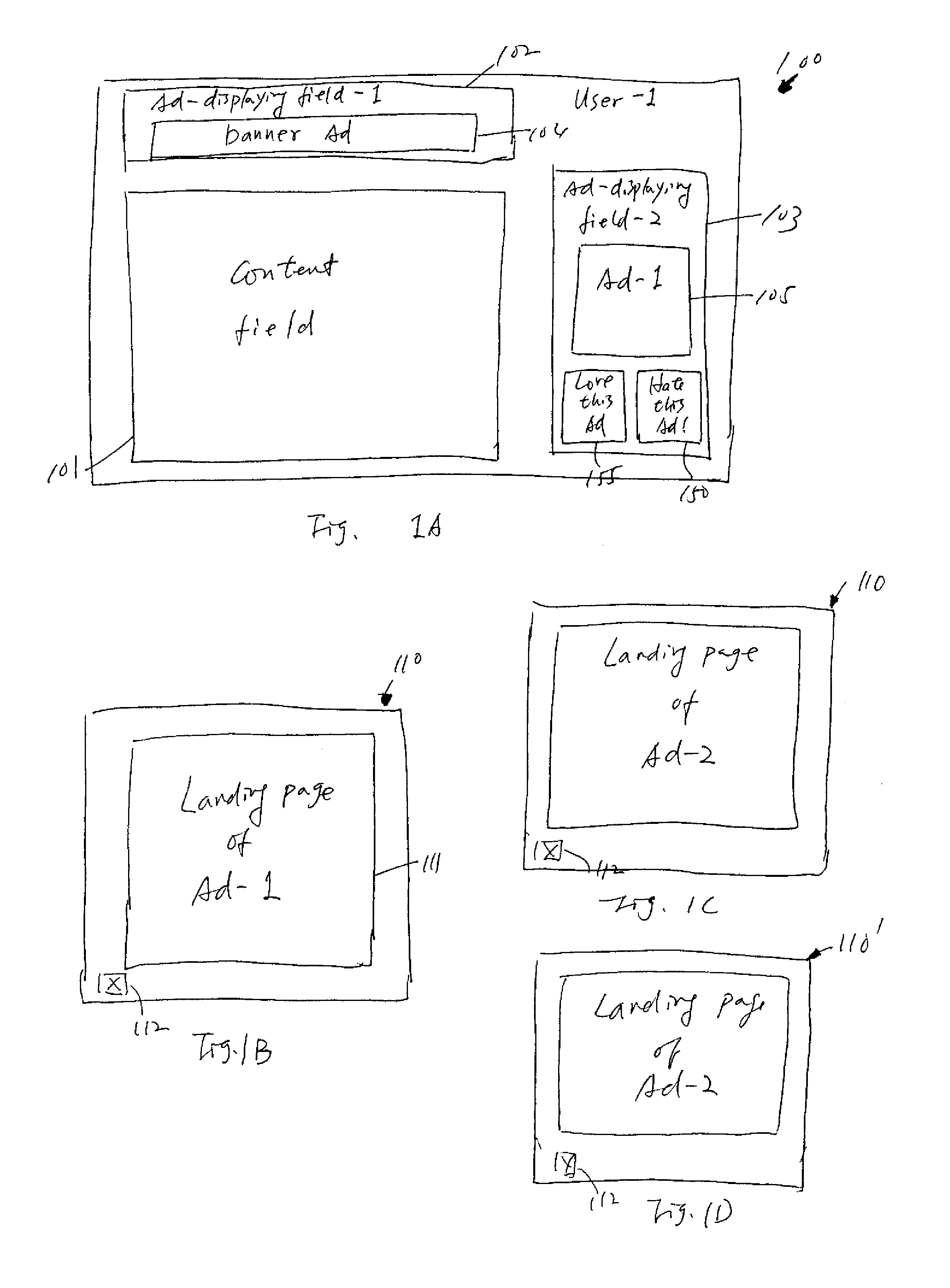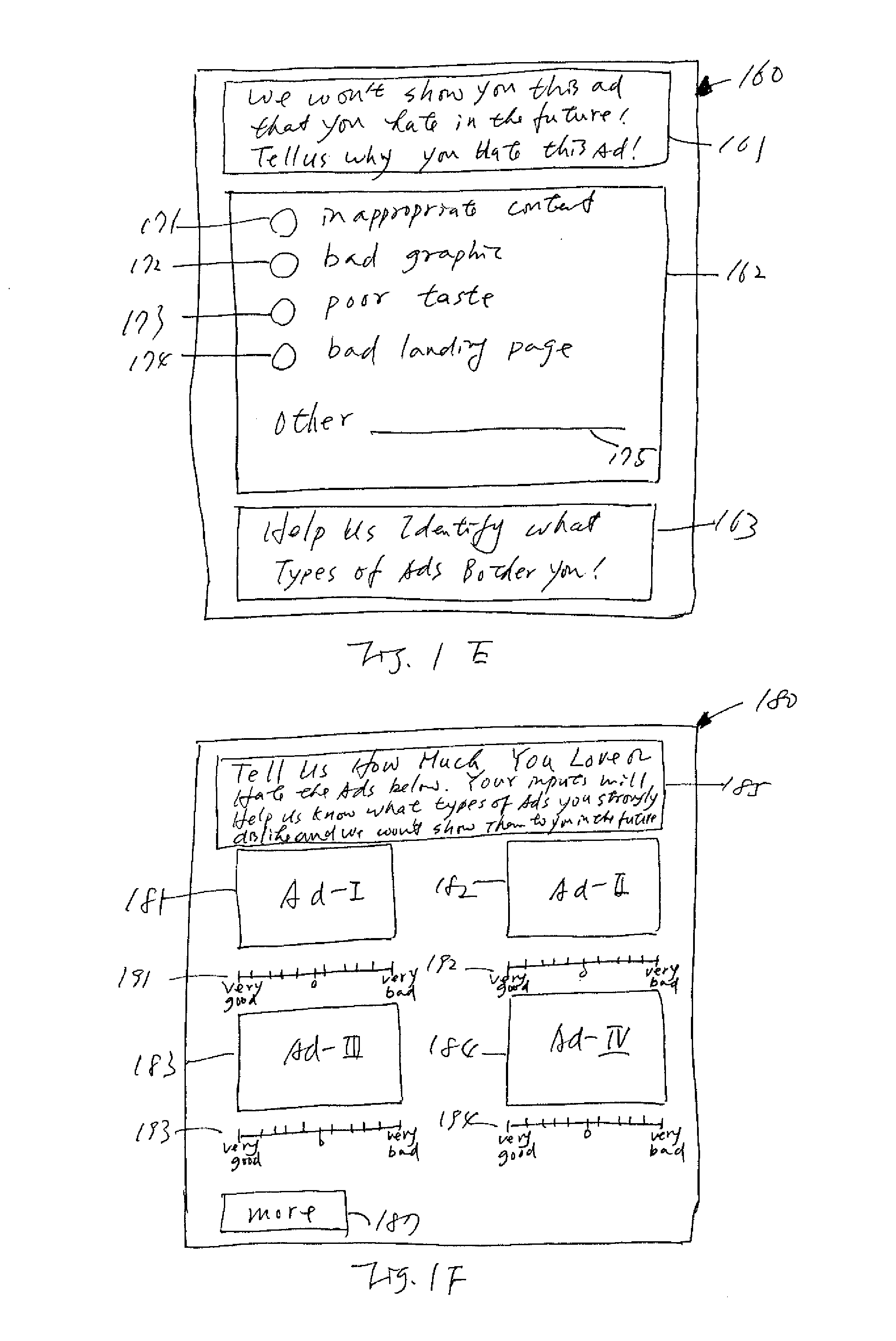User experience of advertisements by allowing users to identify advertisements that users dislike
a technology of user experience and advertisements, applied in the field of display of advertisements, can solve the problems of web sites that stand the chance of driving users away or losing users, and achieve the effect of avoiding the display of advertisements
- Summary
- Abstract
- Description
- Claims
- Application Information
AI Technical Summary
Benefits of technology
Problems solved by technology
Method used
Image
Examples
Embodiment Construction
[0028]As described above, some on-line advertisements are offensive or annoying to Internet users. Advertisements (Ads) that take users to landing pages that have nothing to do with advertisements described in the Ad titles can seriously annoy users. As described in the example above, a user will be displeased when a user clicks on an advertisement for “insurance,” and the user is taken to a landing page having pornography, gambling, or some other topic. When misleading advertisements are displayed to Internet users, the user experience is tarnished. In fact, some users could feel very uncomfortable with certain ads, which lead to less trust in the originating site. Sometimes, users may leave the sites that offer such ads immediately upon viewing such ads or feel less willing to visit the sites in the future. Non-misleading ads can also annoy or offend users. For example, some ads have jumpy images, which are designed to attract users' attention, but in sum are very annoying to many...
PUM
 Login to View More
Login to View More Abstract
Description
Claims
Application Information
 Login to View More
Login to View More - R&D
- Intellectual Property
- Life Sciences
- Materials
- Tech Scout
- Unparalleled Data Quality
- Higher Quality Content
- 60% Fewer Hallucinations
Browse by: Latest US Patents, China's latest patents, Technical Efficacy Thesaurus, Application Domain, Technology Topic, Popular Technical Reports.
© 2025 PatSnap. All rights reserved.Legal|Privacy policy|Modern Slavery Act Transparency Statement|Sitemap|About US| Contact US: help@patsnap.com



